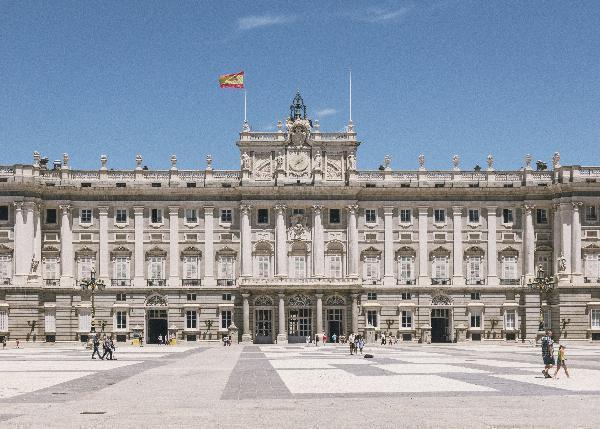Exploring the Majesty of the Royal Palace of Madrid

Strong 8k brings an ultra-HD IPTV experience to your living room and your pocket.
The Royal Palace of Madrid, or "Palacio Real de Madrid" in Spanish, stands as one of the most iconic landmarks in Spain's capital. It is not just a royal residence but a symbol of Spain's rich history, grandeur, and culture. From its stunning architecture to the treasures it holds within its walls, the Royal Palace offers a glimpse into the opulent lifestyle of Spanish royalty. For any traveler visiting Madrid, a trip to this magnificent palace is a must.
A Brief History of the Royal Palace of Madrid
The history of the Royal Palace of Madrid dates back to the 9th century when a Muslim-era fortress stood on the site. After the Reconquista, when Christian forces reclaimed the region, the fortress was transformed into a Christian palace by King Alfonso VI. Over the centuries, the palace evolved, undergoing various renovations and expansions.
The current structure, as it stands today, was built in the 18th century. After a devastating fire in 1734 destroyed the previous Alcázar (a medieval palace), King Philip V commissioned the construction of a new palace. Italian architect Filippo Juvarra initially designed it, but it was his disciple, Giovanni Battista Sacchetti, who brought the vision to life. The construction of the Royal Palace began in 1738 and was completed in 1755. King Charles III, known as the "Mayor King" for his improvements to the city, was the first monarch to reside in the new palace.
Architectural Grandeur
The Royal Palace of Madrid is an architectural masterpiece that blends Baroque and neoclassical styles. Its massive size, covering an area of 135,000 square meters with 3,418 rooms, makes it one of the largest royal palaces in Europe. The façade, characterized by its stately columns and grand balconies, exudes a sense of power and elegance.
Inside, the palace is a treasure trove of artistic and cultural heritage. The grand staircase, designed by Sabatini, is an impressive feature, with marble steps leading up to the royal chambers. The Throne Room, with its red velvet walls, gilded decorations, and crystal chandeliers, reflects the opulence of the Spanish monarchy.
Another highlight is the Royal Chapel, home to a collection of religious relics and a stunning frescoed ceiling painted by Corrado Giaquinto. The Hall of Mirrors, inspired by the Palace of Versailles, dazzles visitors with its intricate mirrors and crystal chandeliers.
The Royal Collections
The Royal Palace of Madrid houses a vast collection of art, antiques, and historical artifacts. Visitors can admire works by some of the greatest artists in history, including Francisco Goya, Caravaggio, and Velázquez. The palace also boasts an impressive collection of tapestries, porcelain, and clocks, many of which date back to the 16th and 17th centuries.
One of the most remarkable collections in the palace is the Royal Armoury. This exhibition showcases an array of armor, weapons, and equestrian equipment used by Spanish kings throughout history. The armor worn by King Philip II in the Battle of Saint Quentin is a particular highlight, offering a glimpse into the martial prowess of Spanish royalty.
Gardens and Surroundings
The beauty of the Royal Palace of Madrid extends beyond its walls. The palace is surrounded by lush gardens that provide a serene escape from the bustling city. The Sabatini Gardens, located on the north side of the palace, were designed in the 1930s and feature beautifully manicured hedges, fountains, and statues. The Campo del Moro Gardens, on the west side, offer stunning views of the palace and are a perfect spot for a leisurely stroll.
Nearby, visitors can also explore the Plaza de Oriente, a grand square flanked by statues of Spanish monarchs. The square is a popular gathering spot for both locals and tourists, offering a picturesque setting to admire the palace from afar.
Visiting the Royal Palace
The Royal Palace of Madrid is open to the public, allowing visitors to explore its opulent interiors and learn about Spain's royal history. Guided tours are available, providing insights into the palace's history, architecture, and collections. The palace also hosts temporary exhibitions, showcasing various aspects of Spanish culture and history.
To make the most of your visit, it's advisable to book your Royal Palace of Madrid tickets in advance. This will not only save time but also ensure entry during peak tourist seasons. Tickets can be purchased online or at the palace's ticket office. Keep in mind that certain areas of the palace may be closed during official state functions or events, so it's a good idea to check the palace's schedule before planning your visit.
Events and Ceremonies
While the Royal Palace of Madrid is no longer the official residence of the Spanish royal family (they now reside at the more modest Zarzuela Palace), it still serves as the venue for state ceremonies and official events. The Changing of the Guard ceremony, held every Wednesday and Saturday, is a popular attraction for visitors. The Solemn Changing of the Guard, a more elaborate version of the ceremony, takes place on the first Wednesday of each month and is a spectacle not to be missed.
Note: IndiBlogHub features both user-submitted and editorial content. We do not verify third-party contributions. Read our Disclaimer and Privacy Policyfor details.


